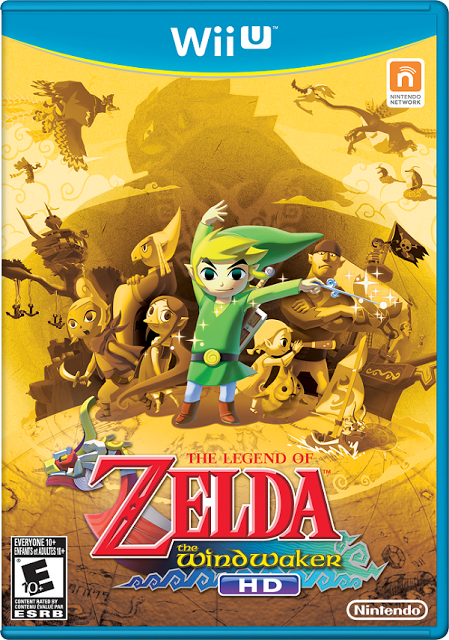
The Legend of Zelda: The Wind Waker HD
Released on the Wii U, September 20, 2013, by Nintendo
Retail: $49.99
Wii U Game Reviews Score: 9.3/10
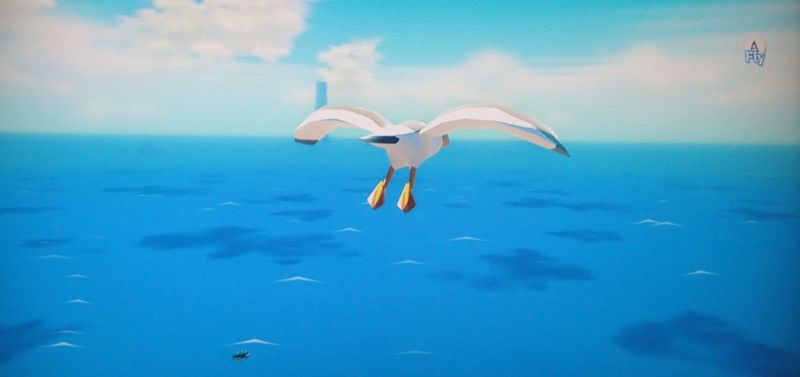
Some relationships are simple. Then again, some relationships are the one I've had with The Legend of Zelda: The Windwaker over the last 13 years.
Some history: Zelda for the NES did not strike my childhood fancy. It was not a 2-D platform game. In my mind, games that were not 2-D plaformers or sports simulations were not games. Then one day, hanging out in the lobby after being essentially abandoned at a Florida hotel, I became acquainted with Street Fighter II. This was indeed a game, too. That Christmas, I saved up all my money, returned some gifts to get more, and bought myself a Super Nintendo and Super Street Fighter II, just so I could play Street Fighter II at my house. Apparently, though, my SNES came with a free game: The Legend of Zelda: A Link to the Past.The game looked unfamiliar, and thus, weird, and I forgot it in the box, nearly throwing it away in between sessions of using Cammy to pummel Chun-Li and vice-versa. That's that.
"Why don't you try that Zelda game?" asked one particular cousin one day. That particular cousin has tended to be right most of the time.
"It looks weird," I said.
"But you have it, so you have to try it," he said.
"Yeah, whatever."
After he left, I thought about his comments, checked out the window to make sure he was long gone, and tried out A Link to the Past.
Within a week, The Legend of Zelda: A Link to the Past became my favorite video game of all time. A Link to the Past marked my departure from arrogant, stick-to-what-I-know child, to adventurous, fun-loving teenager. Several years later, in 1998, Nintendo released A Link to the Past's follow-up, The Legend of Zelda: Ocarina of Time. A little under halfway through Ocarina, Link, the series-protagonist, grows from a child to a 17-year old. The game was released just weeks before my 17th birthday, during a time when my best friend was my Nintendo 64. To say that Wind Waker, released five years later on the Nintendo Gamecube, had a lot to live up to, is an understatement.
If that wasn't pressure enough, Wind Waker directly followed the release Ocarina of Time's N64 quasi-sequel, Majora's Mask. Majora's Mask is one of my favorite games in the Zelda series, but it entirely features an adolescent Link. As much as I love Majora's Mask, by 2003, I was again ready for a Link closer to my own age.
No dice.
Leading up to the game's release, Nintendo announced that the Link of Wind Waker would again be a child. Not only that, but the game would be animated in a cel-shaded, cartoon style, instead of with the awesome, more-realistic graphics the Nintendo Gamecube seemed to be capable of producing. This whole Wind Waker thing just seemed to be not working out for me--it wasn't like finding A Link to the Past in your Super Nintendo box when all you want is Street Fighter II--it was like finding more ocean when all you want is land.
Still, this was a new Zelda game. Mario Sunshine had just disappointed me by not being a traditional Mario game. Certainly, The Wind Waker could not be that big of a departure. Just like with Ocarina of Time, I pre-ordered the game.
Fast forward a few weeks, and about 80% into Wind Waker, I grow frustrated with a fetch quest, and quit. I had already decided I wasn't a fan of the cartoonish graphics, the huge-ocean overworld, and the slight differences in puzzle logic from previous games. The fetch quest sealed the deal--it obfuscated every positive element Wind Waker had going for it (which, even then, I could admit, were a lot). I was done with this game. About that time, a buddy of mine gave me his old PS1, so that I could finally play my long-ago purchased copy of Chrono Cross, the sequel to Chrono Trigger, a game that had years-before overtaken Zelda as my favorite. My copy of Wind Waker soon grew dusty.
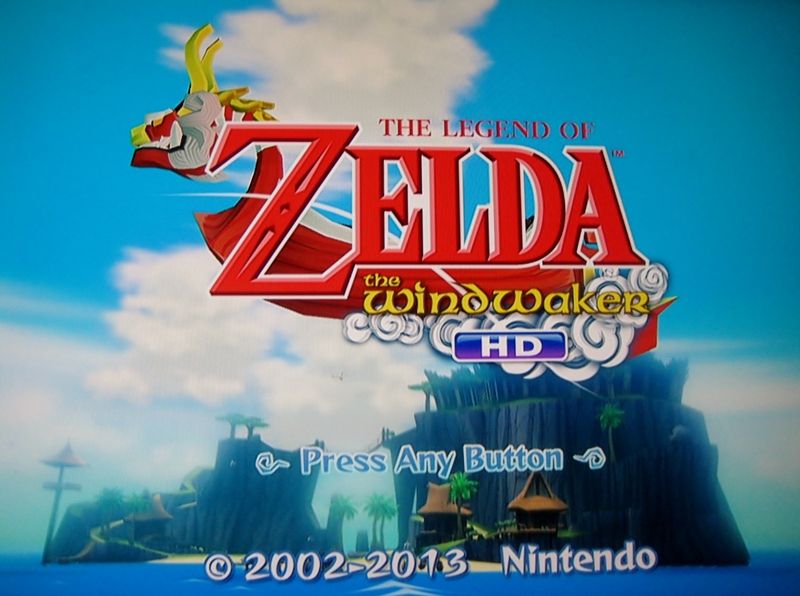
Much to my surprise, outside of a fun foray into the Game Boy Advance's The Legend of Zelda: The Minish Cap (which I completed), I never played another Zelda game again. As the Wii was released, and with it two new Zelda games (admittedly, one of those was also released on the Gamecube), I looked on with jealousy, but never had my chance to play them...until I finally decided to be awesome again. Several years ago, I purchased a Wii U for my son and myself, and my life as a gamer was resurrected. The cherry on top: Nintendo announced they were releasing an HD-update to Wind Waker. Now I could finally take care of some unfinished business.
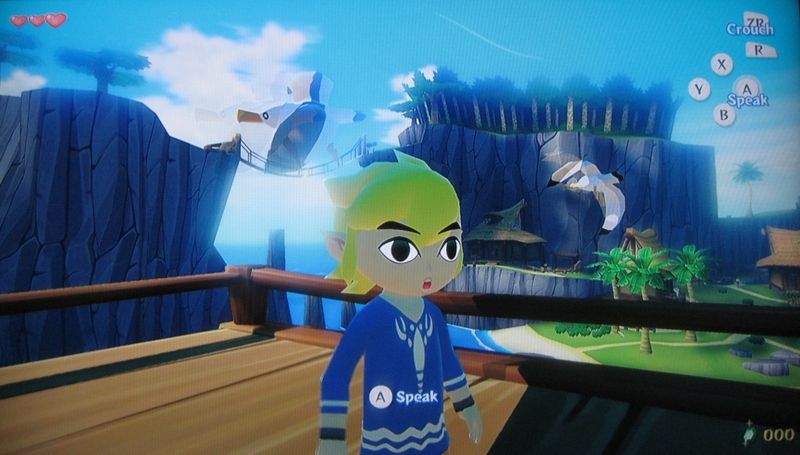
I Assume the Unfinished Business You Took Care of Actually Took Less Time to Complete than this Review Will to Read?
Oh, hi. I'm glad you're here. I was waiting for your snide comments. Actually, considering the intuitive nature inherent in most Zelda games, I am going to attempt to make this as brief as possible.
So James Joyce Length Instead of Victor Hugo? I Mean, You're Still You.
Sure. Let's shoot for that. I love Ulysses.
You Would.
The world of Wind Waker actually brings to mind another Ulysses. There's definitely a heavy ancient-Greek vibe to Wind Waker. The game takes place between many scattered islands in a vast sea. This is a large departure from previous Zelda games, which generally took place in a generic (though generally beautiful and fun to traverse) fantasy world featuring an open field, a forest, a mountain,a lake, and a desert. Even Link's Awakening, the trippy old Game Boy game that shipwrecks Link on a strange island, stays fairly true to this form. Wind Waker breaks this mold, with its ocean overworld, and unique island locales. The setting is completely new.

Is Everything Completely New?
If everything was completely new, this wouldn't be a Zelda game. Wind Waker continues the control scheme started in Ocarina of Time. The B-Button is used to attack with Link's sword. The A-Button is context-sensitive, at times signalling Link to sidle along a wall--don't try this with your sword out, though, or instead of sidling, you'll leap forward with your sword--quite frustrating when you're sidling along a cliff wall. There are also context-sensitive moments in combat If there's a detriment to Wind Waker's A-Button context sensitivity, it's that Link doesn't always seem to do what you want him to. Sometimes you want him to jump up to grab a ledge and he sidles, or vice-versa. Maybe it's the rose-colored glasses of Time, but I don't remember this cropping up in Ocarina.
Like most Zelda games, the Link of Wind Waker accumulates a large variety of items throughout his quest, and also like Ocarina and Majora's Mask, the player can assign/map three items from their inventory at a time to three respective buttons, Y, X, and R.
During combat, the player can have Link lock onto an enemy (or out of combat, to a desired target like a switch or grapple point) by pressing XL, thus allowing Link to circle his prey, and center his attacks upon it (combat can be deep, with a variety of sword-fighting moves and critical hits at Link's employ...or the player can just mash "B"). This control scheme, revolutionary when it was first employed by Ocarina, still works wonderfully. The player saves a lot of time digging through inventory with the button-mapping, and the three buttons can be remapped to different items whenever the player pleases. The enemy-targeting solves the camera issue that often cropped up in 3-D combat games before its invention. While countless games have ripped off this control scheme, it has already been perfected by the Zelda games that invented it.

Wait...what exactly is a Zelda game?
*Sigh* Really? Well, I guess kids who've only played Call of Duty games might not know. Or maybe this is your first game in general. I'll give you the benefit of the doubt.
Zelda games center on a hero named Link, who often begins the game as a regular teenager, and is chosen to undertake some quest to save his world. Link must learn to fight with a sword, and then travel through a vast land full of secrets and magic. He visits towns, ventures deep into dark dungeons, solves puzzles and battles foes in order to retrieve ancient artifacts to assist in his quest. The dungeons are often a centerpiece for Zelda games (Wind Waker's are fun, but not quite series bests), and follow general patterns: Link solves puzzles to unlock doors, and to find keys that unlock other doors. He fights many foes, some native only to that dungeon. He finds a compass to reveal treasure and boss locations, a map with a layout of the dungeon, and an inventory item, often a weapon or tool that will soon prove useful.
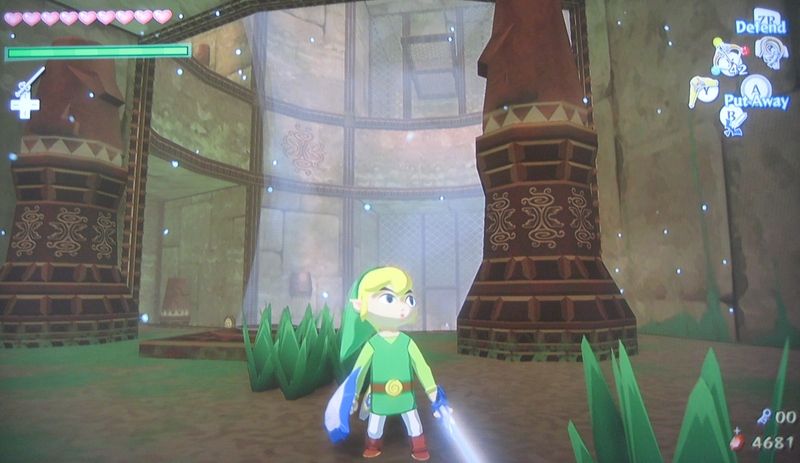
Link fights a mini-boss about 2/3 of the way through the dungeon, and then finally, at the end, fights said final boss (Wind Waker's are epic in scale, but only the last couple pose any challenge). When the boss is defeated, Link earns an extra heart on his hit-meter, and whatever pendant, or jewel the boss is holding that is key to reaching the end of the quest...
And speaking of quest, Link is often aided in his by Princess Zelda, who is portrayed just a little differently in each game, sometimes just as someone Link has to save, and sometimes as someone whose heroics are just as important to the quest as Link's (Wind Waker's Zelda splits the difference between tough as nails, and damsel in distress).
The key theme of a Zelda game, though, is exploration and discovery, as the player is free to venture across a vast world, and to undertake numerous mini-quests that aren't necessary to complete the main quest, but that may reward Link with items that make his journey easier. Even if one stays the course and follows only the linear plot of the game, the sense of discovery as Link visits new regions, encounters new foes, and gains new items, is still thick.

Outside of the Watery Setting, What Else Is Different about Wind Waker?
The key difference in Wind Waker, and what's been the lingering story even years later, is style. After the two Nintendo 64 Zeldas, many, including me, assumed Nintendo would then continuously create more and more realistic-looking Zelda games. Instead, Nintendo gave us something...else. Having already spent my teenage years defending Nintendo from people who said the company only made games for little kids, I felt like Nintendo was purposefully mocking me: not only do we make games for little kids...we make cartoons!
Wind Waker's graphics are cell-shaded in the same vein as the classic Dreamcast game, Jet Grind Radio.
Or in other words: yep, it's an interactive cartoon.
While this certainly was not my or most Zelda fans' first choice of style for a Zelda game, the Wind Waker's graphics end up becoming one of its most endearing aspects. With this more classic cartoon style, the graphics can't get dated. They still look great now...one doesn't watch Looney Tunes thinking, what this really needs is better graphics. A cartoon looks like it is supposed to look.
For this HD remake, a new lighting system makes Wind Waker look even better. While some may complain that this improvement diminishes the cartoon elements just a bit, the incredible sense of motion they create more than makes up for it. The greater effect of clouds over the water, and trees swaying in a sea-breeze only serves to make the game more enveloping. There's nothing like climbing to the top of the an island as the sun sets, fish jumping in the waves far below, grass moving in the wind all around you. While the HD-upgrade obviously makes Wind Waker look better on a modern television, these lighting improvements are also worth the price of admission.
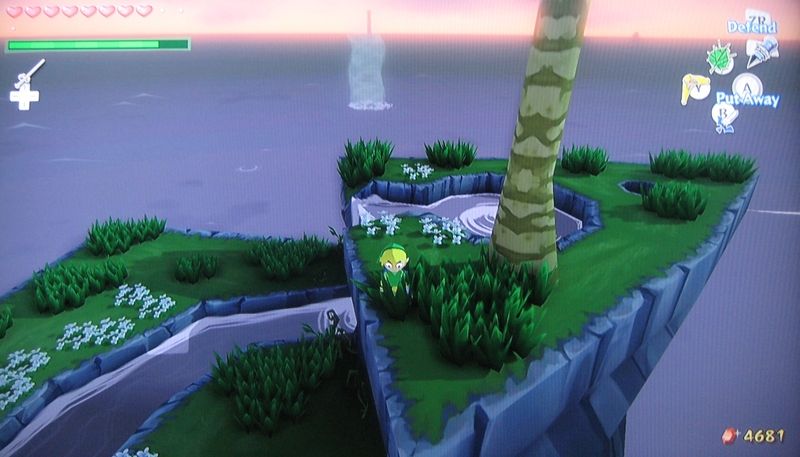 Isn't Music Important to these Games, As Well?
Isn't Music Important to these Games, As Well?Yes. Unfortunately, Wind Waker is the first Zelda game not to feature the name "Koji Kondo" next to the "Music By" credit. Kondo came up with the classic Zelda theme, perhaps second only to the Mario "Ground Theme" in video game music familiarity...and Kondo wrote that one, too. Kondo's soundtracks for the original Zelda, A Link to the Past, Ocarina of Time, and Majora's Mask are all legendary. Kondo is arguably the John Williams of video game music.
A team of composers take Kondo's place on Windwaker. They do a great job, creating a very memorable Celtic feel that furthers Wind Waker's seaborne atmosphere. The theme composed for Link's sailing through the open seas conjures an incredible sense of discovery and adventure that's about as Legend of Zelda as it gets. If I've got a nitpick, though, it's that some of the game's tracks are a bit too short and simplistic. In particular, the dungeon themes, as a whole, lack depth, and pale in comparison to the work Kondo did for the vast depths of A Link to the Past and Ocarina of Time. That nitpick aside, this is excellent work.
Wind Waker's sound effects are top notch, riding a great line between cartoonish during the game's more humorous sections, and realistic when Link is clanging his sword against the armor of his enemies, or running through the ever waxing/waning surf. Every sound-effect associated with the sea is right on the money. Also, because this is a Zelda game, Link doesn't talk (he is a classic silent hero), and everyone else speaks in text boxes.
Hey, What's a Wind Waker?
Hey, I'm glad you asked.
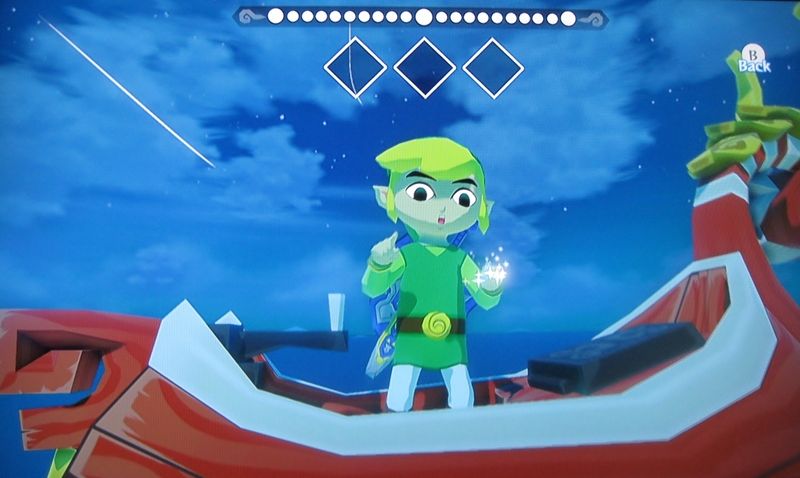
The Wind Waker is obviously key to the game that took its name--it is a baton Link uses to control the wind. This is necessary to sail Link's ship across the game's ocean overworld. The Wind Waker can be used to play several other songs Link learns throughout the game. These songs serve the same function as some of those in Ocarina of Time, allowing Link powers as to change the time of day, or warp to another location, among others. These abilities come in handy as the quest expands.
What Is the Quest Here Anyway?
It doesn't really matter. All that matters is there is a quest. People are kidnapped, and dark powers arise, and Link has to travel the world, collect various items, and become a great hero in order to save the day. With that said, Wind Waker does provide a bit more thematic depth than most Zelda games, with ideas like letting go of the past, and creating a better world for the next generation receiving particular focus.
You're Still a Long-Winded Gasbag, but You Seem to Be a Little Less Gassy than Usual. Why Don't You Conclude With the Reasons this Remake Won You Over.
I appreciate your direction, imaginary narrator. I feel like I have talked the game up without mentioning why I think it is so much better than the original (which I think I'd rate an 8.6/10.0). The Wind Waker HD contains multiple improvements that helped me to get over the original hump, and finally complete this game. I can easily identify the elements that caused me to quit the first time:
1. The Triforce Shard fetch quest at the end of the game seemed so needlessly tedious, I couldn't gather the will to complete it. Add to that the fact that often an individual Triforce Shard Chart had to first be collected in order to then collect the individual Triforce Shards, and you have the recipe to video game misery. In the intervening years since Wind Waker's release, I've spoken to many others who quit the game at this exact same point. The quest has been streamlined here, with less charts and shards to collect. While it's still unfortunate and a bit anticlimactic that the developers chose to make the latter portion of the game a mandatory fetch quest, the remake does do a decent job of making the fetching feel more like a good excuse to visit still unexplored portions of the map, rather than just to backtrack for hours..

2. The Wind Waker elements become tedious. Having to play the same song over and over again just because you want to slightly change the direction your boat is heading gets old really fast. I didn't particularly enjoy having to do this when I was bouncing back and forth between towns and dungeons, so having to do it ad nauseum for the previously mentioned fetch quest brought me to the brink of insanity. These two factors in conjunction led to my unbeaten copy of Wind Waker being unceremoniously shoved back into its case...forever.
But then, lo and behold, this updated, HD Wii U version added the Red Sail.
The Red Sail, which can be acquired near the game's midpoint at an island auction, allows Link to sail at lightning speed, regardless of wind direction. This way, just when Link's Wind Waker starts to lose its polish, the player can disregard that element and move on to other things. Nothing in an otherwise great game has ever ticked me off as badly as when I'd overshoot a sunken triforce piece by boat, have to pull out the Wind Waker and play to change the direction of the wind, overshoot it again, rinse, repeat. This red sail eradicates the misery.
This Wii U upgrade also takes fine advantage of the gamepad's screen, as the player can look at the map, or cycle through inventory without having to pause. Less impressively, the player can use the gamepad's motion control capabilities to aim projectiles.
One quick nitpick of an unchanged element that is emblematic of something larger: the Nintendo 64 Zelda games name the dungeon bosses as each respective one makes their entrance. Wind Waker does not do this, and that missing detail reveals the lack of a certain polish Zelda games have conditioned me to expect. While it's a small thing, this is still a disappointment.
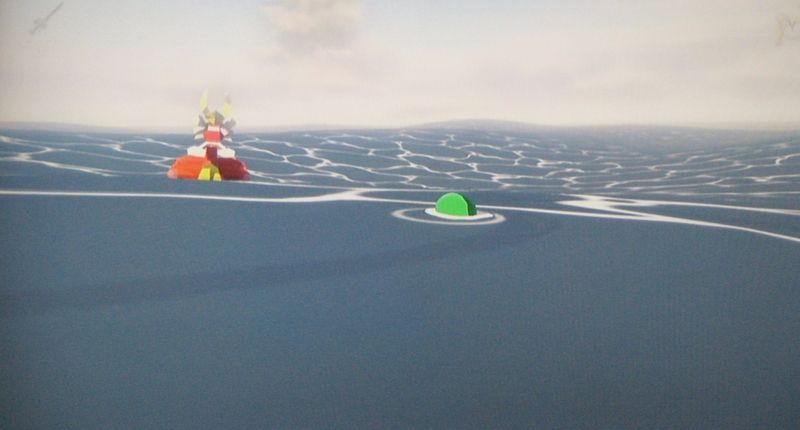
So is Link swimming Around this Whole Time?
No! Haven't you been looking at the pictures and catching the references to the "boat?" The "sail?" That's cool, I'm not even mad. I will end this thing talking about the boat. That's a great way to finish this.
Link's boat is a talking, aquatic red lion. That sounds weird, but in the game, it is weirdly not. The sailing portions of Wind Waker, particularly in this HD remake, are one of the game's most enjoyable elements. Few things beat sailing into the sunset and on through the night, looming landmarks guiding the way through moonlight (and on occasion when the moon is gone, as the night sky in Wind Waker undergoes lunar cycles, starlight).
Link's boat functions much like Epona the horse did for Link's Nintendo 64 adventures, except this time, if you get knock off, you can drown (Link has a small oxygen meter). The reason Link can get knocked off is that the ocean are not an entirely friendly place. Enemy ships lurk the high seas, ready to rain down cannon fire upon our hero's head. Various sea monsters are also ready to send Link to Navi Jones Locker. Thankfully, once Link gains the ability to use bombs, his ship sports a cannon, making for some sweet ship to ship combat. Also, once the bow is earned, Link can tee off on any menacing creature that needs to get put in its place.
Most importantly, the boat also functions as a guide, directing Link to the next leg of his quest when the player doesn't know where to steer. However, there's nothing to stop Link from sailing to the (literally) four corners of this Earth. This is one of the game's greatest elements. Link's map of the sea is populated by a 7x7 grid of 49 squares. Each map square, which is generally occupied by at least one unique island, is blank to begin the game. It's up to the player to fill in these gaps...and the game can be saved at any point.
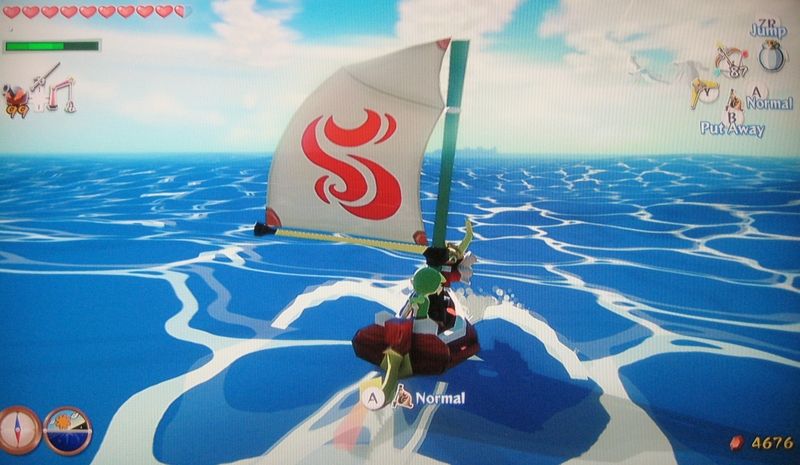
Admittedly, I had recently completed the Dreamcast RPG, Skies of Arcadia, before I picked up Wind Waker for the first time. This numbed my sense of discovery just a bit. However, the sense of discovery is this game's best aspect, and returning now with (the incredible) Arcadia less fresh in my mind, Wind Waker's adventuring holds much more of a wow factor.
So overall, I can't say that Wind Waker has become my favorite entry in The Legend of Zelda series, but I can say that it is a lovely game marred by several small flaws that might keep it from the top, but do nothing to tarnish its greatness.

I liked the new adjustments as well--the faster sail and the streamlining of the fetch quest really improved the game for me. But the approach to the dungeons is still what holds this game back... we were a little spoiled with the shear amount of dungeons in Link to the Past, but it's still really disappointing to have so few in this game. That's what has always held it back for me, as I loved the graphics and the setting from when it came out.
ReplyDeleteTo seal the deal, my wonderful spouse got me this for Christmas... I can't recall if I told you. http://www.amazon.com/Good-Smile-Legend-Zelda-Nendoroid/dp/B00JL74W4I/ref=sr_1_1?ie=UTF8&qid=1458168457&sr=8-1&keywords=wind+waker+nendoroid
Whenever you get the chance, I'd really recommend Skyward Sword to you. It's my favorite since Link to the Past (I liked Ocarina's move to 3d, but I always got hung up on its blocky graphics and didn't own a 64 to be able to play it, so take that with a grain of salt).
While it does have themed locations that you return to more than once, you explore new areas when you do so, which really gives added legs to the locations. And they generally do a fun spin on the traditional looks to the areas--the desert location has a Mayan/Aztec feel as you explore ruins, as it used to be a lush jungle, for instance. There's also some new gadgets that were really fun and added new dimensions to the Zelda formula.
An added plus is that Zelda is off on her own quests while Link is, which gives her more agency. I just wish you could actually play as her doing her side of the story. That would be a really wonderful new take on a Zelda game.
--Neal
Neal, I am playing Twilight Princess right now, and its ten-count of dungeons is especially making Wind-Waker's puny four-count pale. Also, I have a copy of Skyword Sword, and I am planning on playing through and reviewing that one next.
ReplyDeleteI'll be curious to hear what you think of Twilight Princess. I played it on the Wii and kind of felt like it was an unfortunate throwback to the 64 Zelda (wanting the realism/adult link, etc., that so many complained was absent in Wind Waker). I wasn't quite sure what to think of the dark world stuff, either.
ReplyDeleteThat said, I kind of get a kick out of Link in dog form, and the ball and chain weapon is a hilarious spoof on "where does he keep all these wonderful toys, anyway?" You have to see the animation of him taking it out and then holding it to really appreciate it. I saw trailer for the new HD upgrade to it, and it got me hankering for it more than I thought.
Part of what I like about Skyward Sword is the feel of it. Not unlike Wind Waker, the setting really makes it special, though this time you're in the sky. I have an affinity for wind and flight, though, so that explains some of it. But even the land sections you go to stick out in my mind more than most of Twilight Princess.
Neal